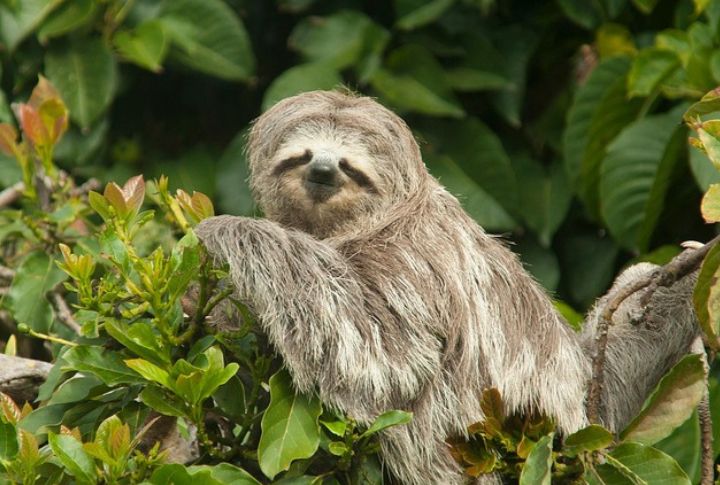
Sloths, the slow-moving icons of the rainforest, are among the most interesting and misunderstood creatures in the animal kingdom. Found primarily in the tropical forests of Central and South America, these gentle mammals are the closest living relatives to the anteaters, with whom they share many traits. Here are 20 facts that showcase the remarkable nature of these laid-back kings of the jungle.
Slow-Moving Mammals
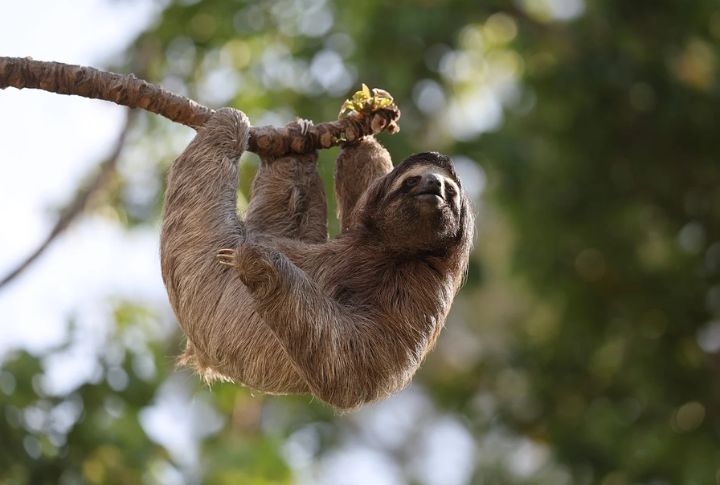
They are known for their slow movements, which average 0.03 mph, largely due to their low metabolic rate. This slow pace helps them conserve energy as their diet of leaves provides them with limited nutrition. Sloths are so slow that algae often grows on their fur, giving them a greenish hue. This further helps them blend into their environment.
Two Main Types Of Sloths
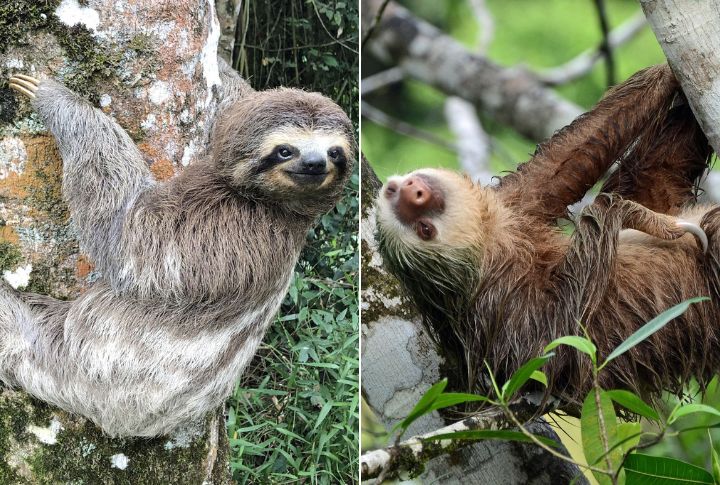
There are two broad categories of sloths: the two-toed sloths (Genus Choloepus) and the three-toed sloths (Genus Bradypus). Both sloths actually have three toes on their hind limbs. The difference lies in their front limbs: two-toed sloths have two digits, while three-toed sloths have three. Both have three digits on their hind limbs.
Spend Most Of Their Life In Trees
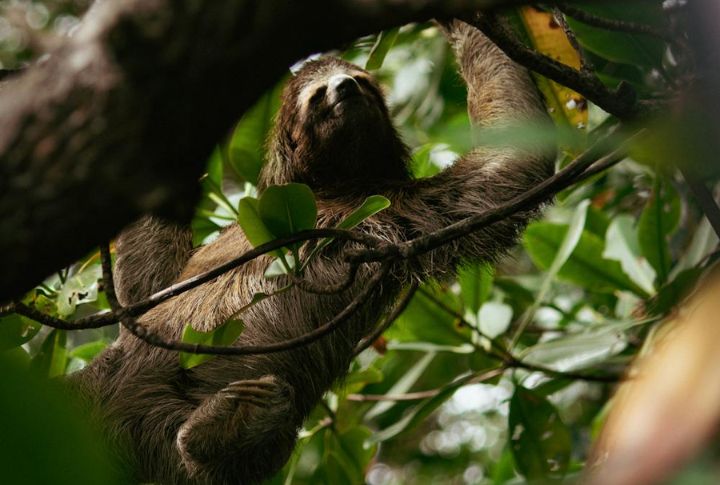
As tree-dwellers, sloths spend nearly their entire lives in the canopies of tropical rainforests. They are specially adapted to this arboreal lifestyle, with long, curved claws that help them grip tree branches securely. These animals are so used to living in the trees that they come down only once a week to defecate.
Energy-Saving Internal System
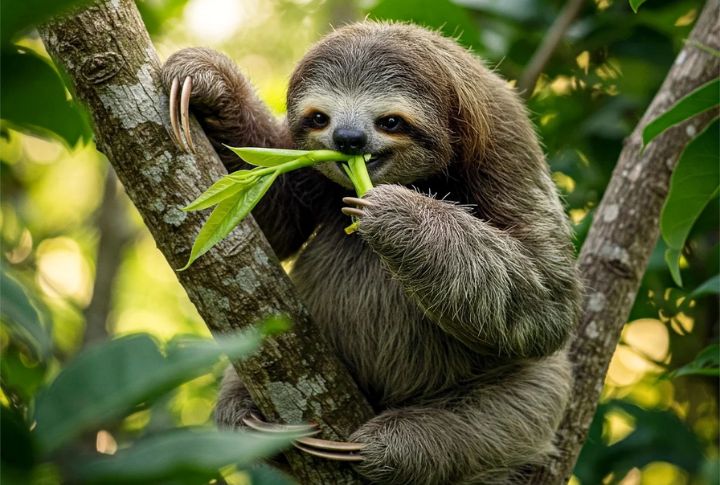
Sloths possess one of the slowest metabolic systems among mammals, functioning at just 40–45% of what would be expected for their body size. This isn’t just about moving slowly—it affects internal systems like the heart and digestive system. This internal sluggishness is a finely tuned survival strategy that conserves energy to thrive on a nutrient-poor, leaf-based diet.
Lightweight Bones
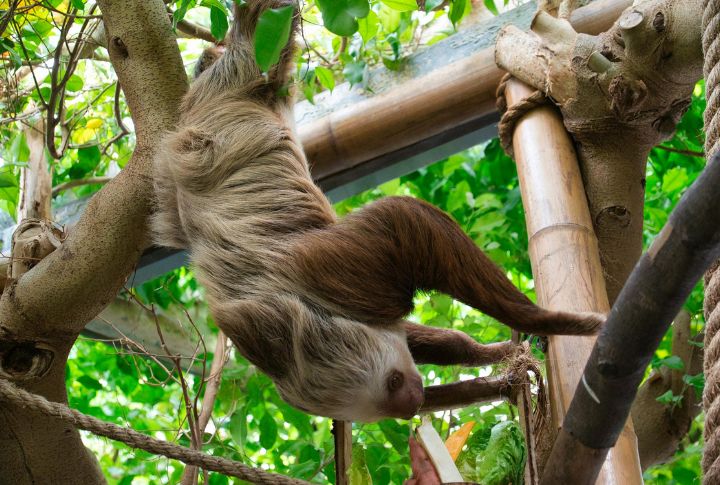
Sloths have lightweight bones, which helps them remain light when hanging from tree branches but makes them more vulnerable to predators on the ground. Their low bone density is thought to help them conserve energy and avoid exerting unnecessary effort while in the trees. This characteristic also enables sloths to float more easily in water.
Unique Neck Structure

Three-toed sloths have an extraordinary neck structure that helps them turn their heads up to 270 degrees. Such flexibility is due to their having nine cervical (neck) vertebrae, compared to the typical seven found in most mammals, including humans. This adaptation enables sloths to scan their environment for predators without having to move their bodies.
Specialized Fur Coat
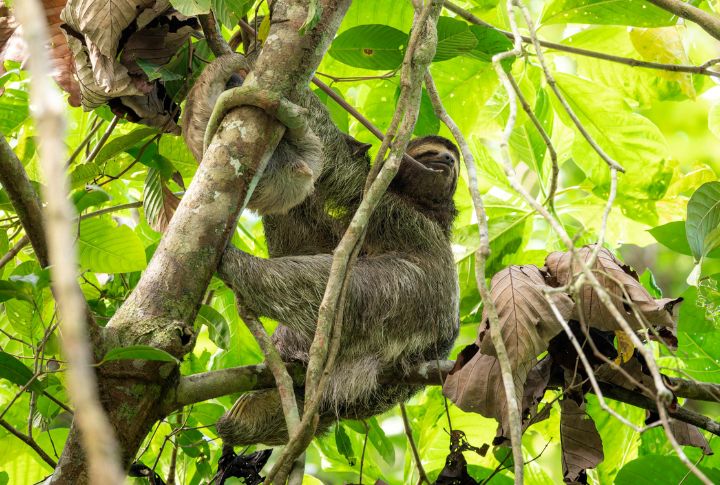
Sloths’ fur is not only an adaptation for their slow lifestyle but also plays a role in their camouflage. It is home to different microorganisms, including algae, which give it a greenish tint that blends in with the tree canopy. Additionally, their fur is water-resistant, preventing them from getting too wet while in the trees.
Excellent swimmers
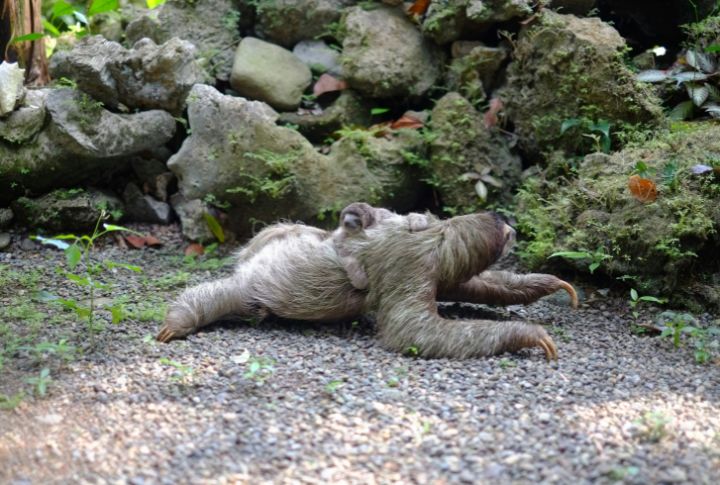
Despite their slow movement on land, sloths are surprisingly good swimmers. The animal can hold its breath for up to 40 minutes underwater, which allows them to cross rivers in search of food or shelter. When swimming, they also use their long arms to paddle through the water.
Unique Digestive System
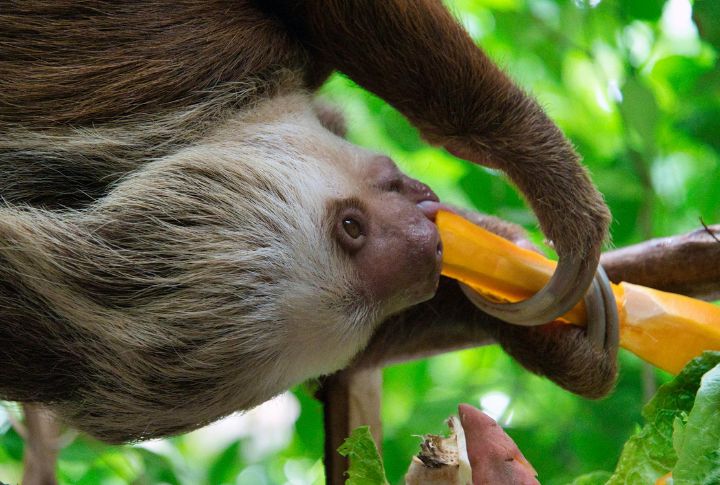
A sloth’s digestive system is adapted to their herbivorous diet. Their stomachs have multiple chambers, similar to a cow’s, allowing them to slowly ferment the tough leaves they consume. Also, their digestive system is adapted to extract maximum nutrients from small amounts of low-calorie food.
Poor Eyesight
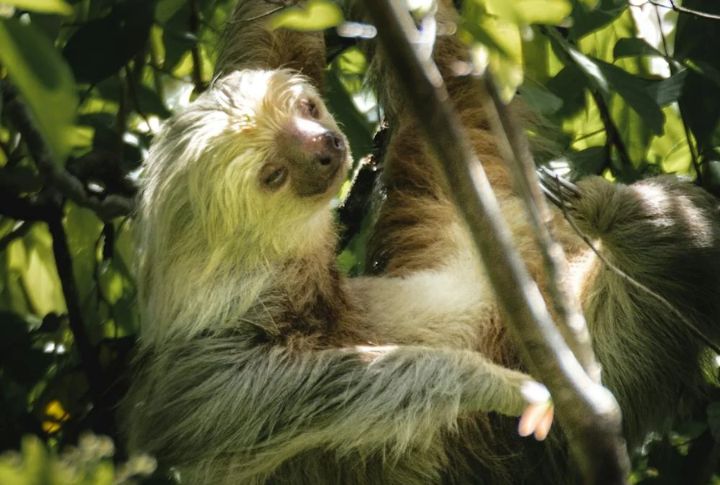
Sloths have poor eyesight, relying instead on a keen sense of smell and hearing. This helps them detect predators and navigate their surroundings in a timely manner. Furthermore, depending on the species, their eyes are adapted for low-light conditions, suiting their crepuscular or diurnal habits.
Few Predators
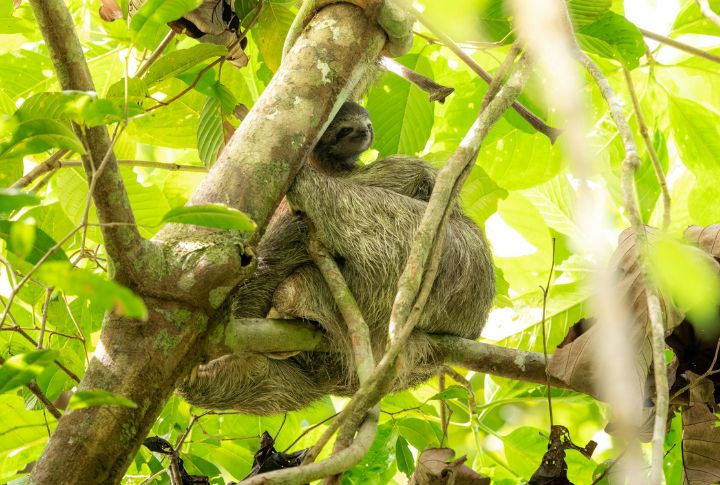
Because of their slow movements and camouflage, sloths face few natural predators. Still, they are not entirely free from danger. Their primary predators include jaguars, ocelots, and harpy eagles. However, sloths are rarely hunted by these animals due to their ability to blend into the environment and remain motionless for long periods.
Low Social Interaction
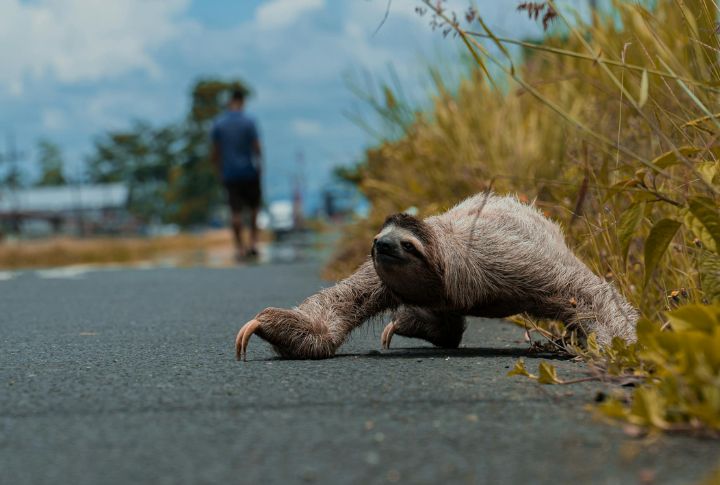
Spending more time in trees has made sloths solitary animals. They do not form large groups like other mammals, as their slow movements and solitary nature do not require much social interaction. They only come together during mating seasons; even then, the interactions are brief and happen only once a year.
Herbivores
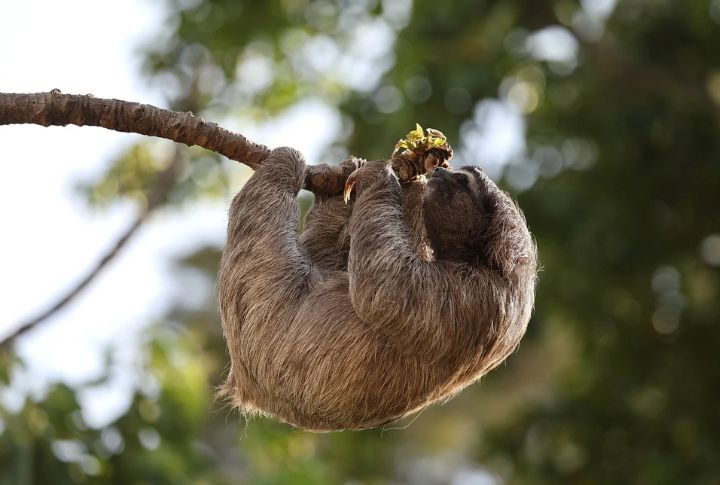
Sloths are primarily herbivores, feeding mainly on leaves, buds, and occasionally fruits. Two-toed sloths rarely eat insects or small vertebrates. Their slow metabolism is suited to their low-energy diet, and they do not need to hunt for food like carnivores. This slow digestive system is adapted to extract sufficient nutrients from their plant-based diet.
Unique Vocalization
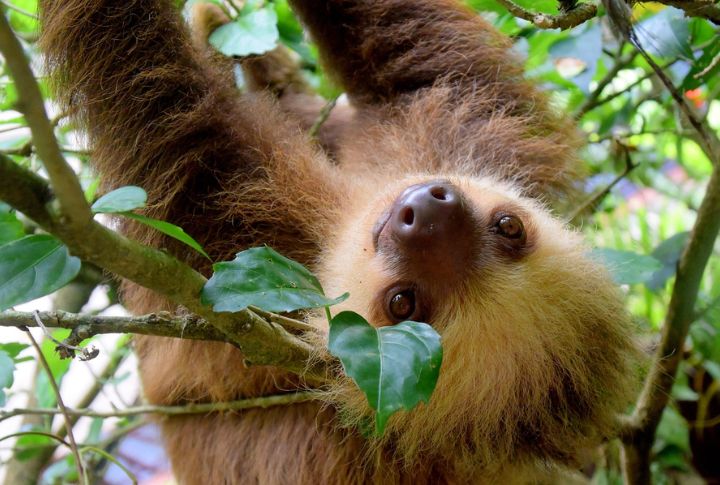
While sloths are generally quiet animals, they produce a range of vocalizations that can be surprisingly loud. These include whistles, growls, and screams, which they use to communicate. Sloths often use vocalizations to express distress or to signal their presence to other sloths. These vocalizations can also be used during mating rituals, where males call out to females.
Reproduction Is Rare And Risky
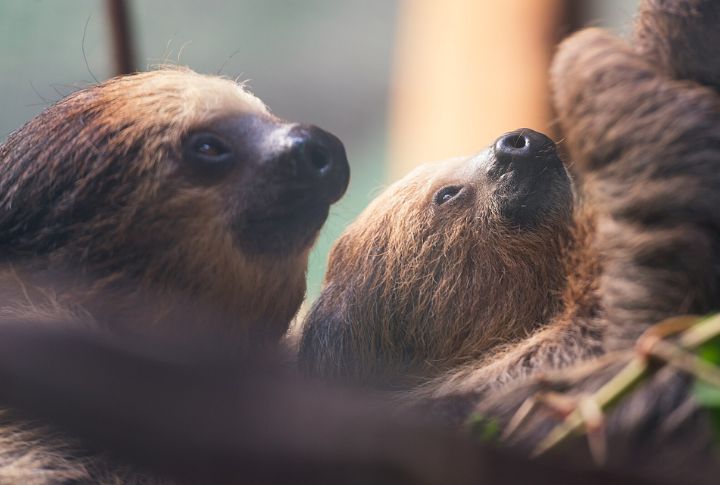
The animal reproduces infrequently, with females giving birth only once every one to three years. This low reproductive frequency is tied to their solitary behavior and long gestation periods, between six and eleven and a half months, depending on the species. Additionally, infant survival can be uncertain due to predators, falls from trees, or habitat loss.
Sloths Can Fall from Great Heights and Survive
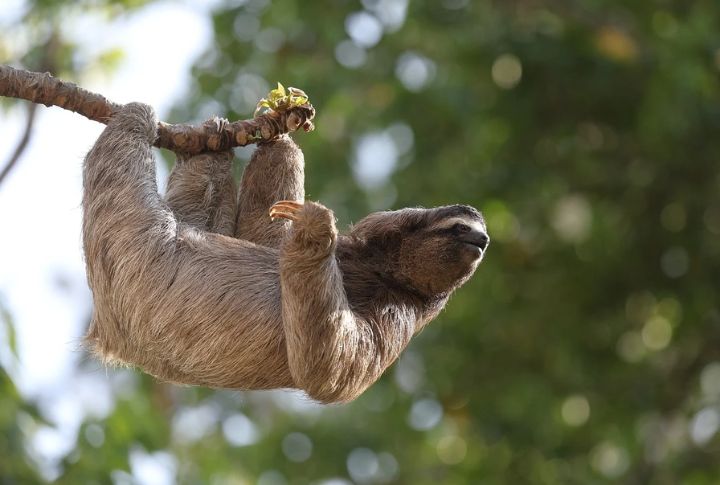
Amazingly, sloths can survive falls from heights of over 100 feet, though injuries may occur. They owe this to their low body weight and flexible limbs, which help absorb the impact and protect vital organs. Creatures like this, which spend most of their lives high in the treetops, need such resilience.
Vulnerable To Habitat Destruction
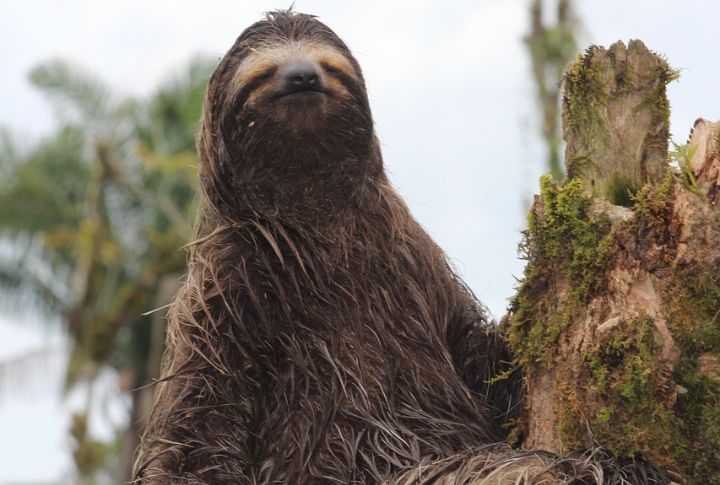
This animal faces threats from deforestation and habitat destruction. As rainforests are cleared for agriculture and development, sloths lose their homes and are forced into smaller, more fragmented areas. This can increase competition for food and mates, as well as higher predation risks. It also increases the likelihood of human encounters, which may result in their capture.
Important For Their Ecosystems

The roles of sloths in ecosystems are indispensable. By feeding on leaves and other vegetation, they help maintain the health of the trees in the rainforest. Sloths’ slow movements and the algae that grow on their fur contribute to the overall biodiversity of the area. Their droppings also provide nutrients to the forest floor.
Slow Immune Response
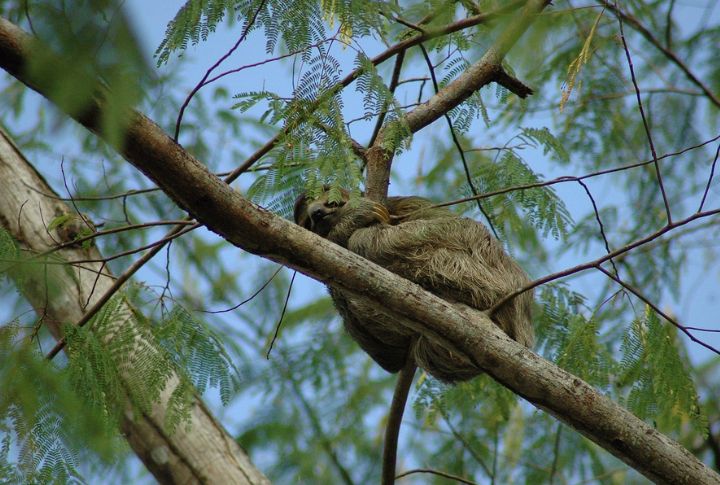
Sloths’ immune systems are just as strong as those of other animals. However, their slow metabolism and low-energy lifestyle make it difficult for their bodies to respond quickly to pathogens. Parasites like ticks and lice live in their fur and feed off it. This can affect their health if they are under stress or malnourished.
Long lifespan
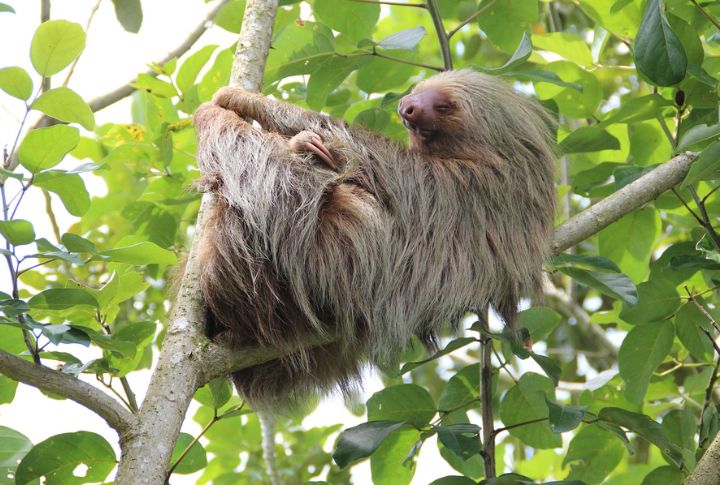
Most sloths can live for up to 30 years in the wild, though some live shorter lives due to predation or environmental factors. In captivity, they can live even longer, with some reaching 40 years of age. Ongoing conservation efforts aim to protect these unique animals and ensure their continued existence in their natural habitats.

